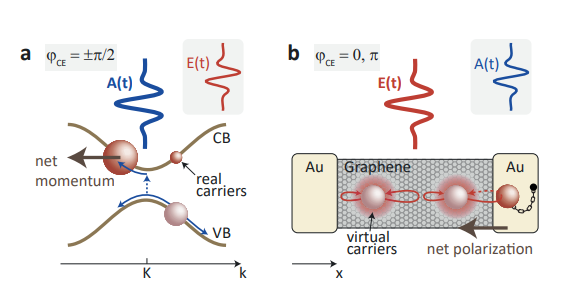Light-field control of real and virtual charge carriers
PubDate: Mar 2022
Teams: Friedrich-Alexander-Universit¨at;Stanford PULSE Institute;University of Rochester;McGill University
Writers: Tobias Boolakee, Christian Heide, Antonio Garzón-Ramírez, Heiko B. Weber, Ignacio Franco, Peter Hommelhoff
PDF: Light-field control of real and virtual charge carriers

Abstract
Light-driven electronic excitation is a cornerstone for energy and information transfer. In the interaction of intense and ultrafast light fields with solids, electrons may be excited irreversibly, or transiently during illumination only. As the transient electron population cannot be observed after the light pulse is gone it is referred to as virtual, while the population remaining excited is called real. Virtual charge carriers have recently been associated with high-harmonic generation and transient absorption, while photocurrent generation may stem from real as well as virtual charge carriers. Yet, a link between the carrier types in their generation and importance for observables up to technological relevance is missing. Here we show that real and virtual carriers can be excited and disentangled in the optical generation of currents in a gold-graphene-gold heterostructure using few-cycle laser pulses. Depending on the waveform used for photoexcitation, real carriers receive net momentum and propagate to the gold electrodes, while virtual carriers generate a polarization response read out at the gold-graphene interfaces. Based on these insights, we further demonstrate a proof of concept of a logic gate for future lightwave electronics. Our results offer a direct means to monitor and excite real and virtual charge carriers. Individual control over each type will dramatically increase the integrated circuit design space and bring closer to reality petahertz signal processing.


